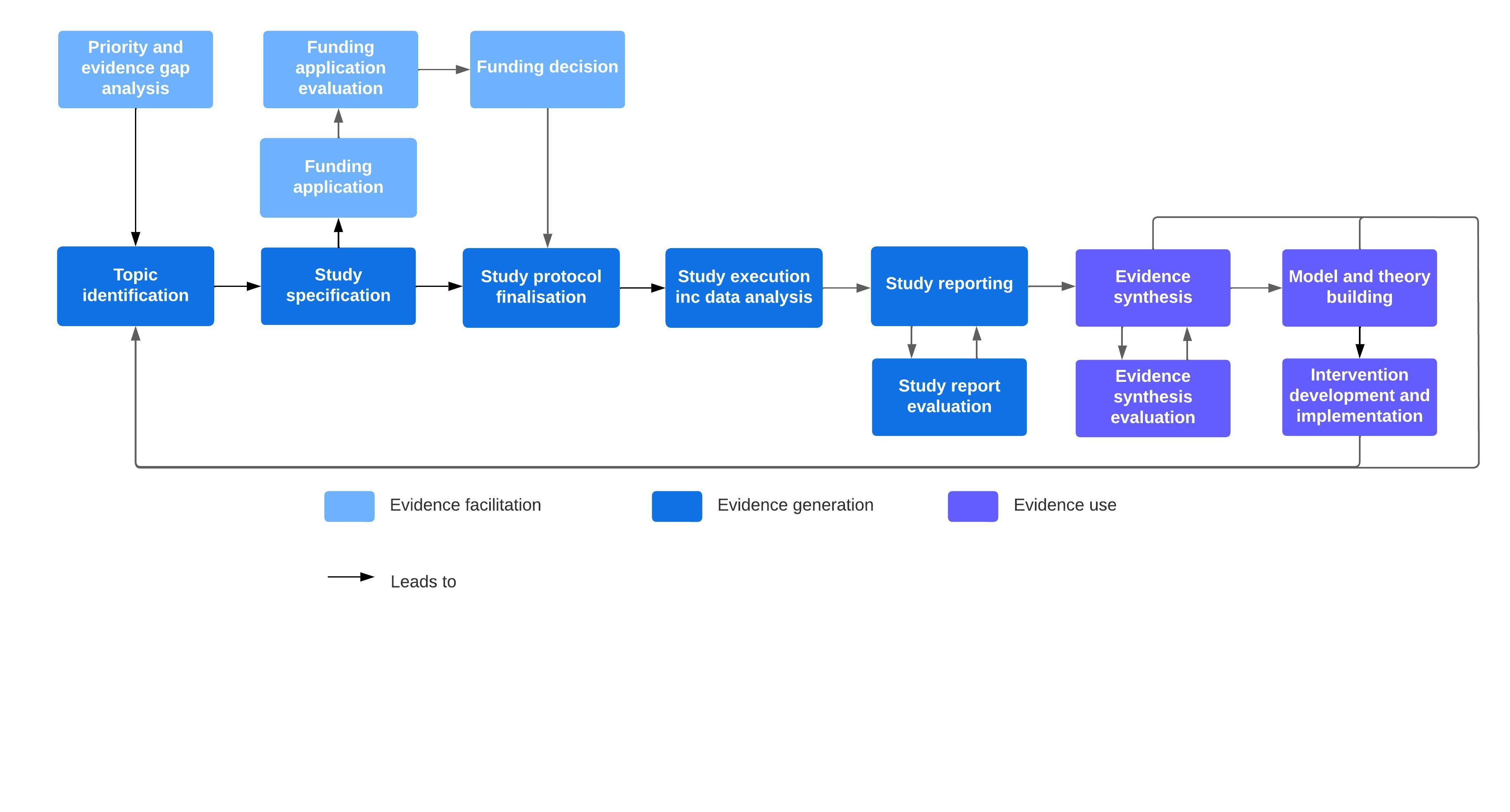The research process involves the following processes:
- Priority and evidence gap mapping: Policymakers, funding agencies, and researchers set priorities for research areas that should be targeted.
- Topic identification: Funding agencies and researchers select specific topics for investigation.
- Funding application: Researchers apply for funding from funding agencies.
- Funding application evaluation: Funding agencies evaluate research applications, often through a formal peer review process.
- Funding decision-making: Funding agencies decide what research applications to fund.
- Study protocol finalisation: Researchers develop detailed protocols for their studies.
- Study execution, including data analysis: Researchers implement their research protocols, gather data, and analyse the data.
- Study reporting: Researchers prepare study reports and usually submit them for publication
- Study reporting evaluation: Journals evaluate research reports and decide whether or not to publish and make recommendations for improvements
- Evidence synthesis: Researchers identify studies relevant to research questions and combine evidence from those studies to answer the questions.
- Evidence synthesis evaluation: Journals evaluate reports of evidence synthesis and decide whether or not to publish and make recommendations for improvements
- Model and theory building: Researchers combine evidence from studies to develop and evaluate models and theories
- Intervention development and implementation: Researchers, practitioners and policymakers develop and implement interventions based
The diagram below illustrates how these processes work together in the 'research ecosystem'. To get a full-size version of the diagram click here
